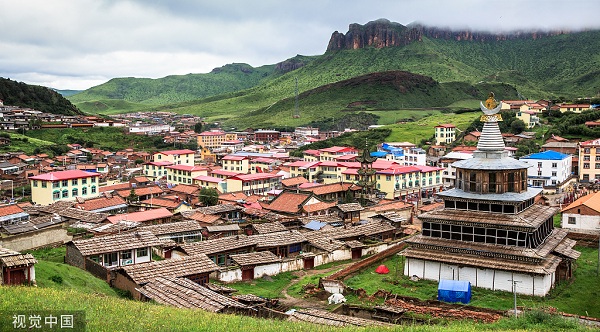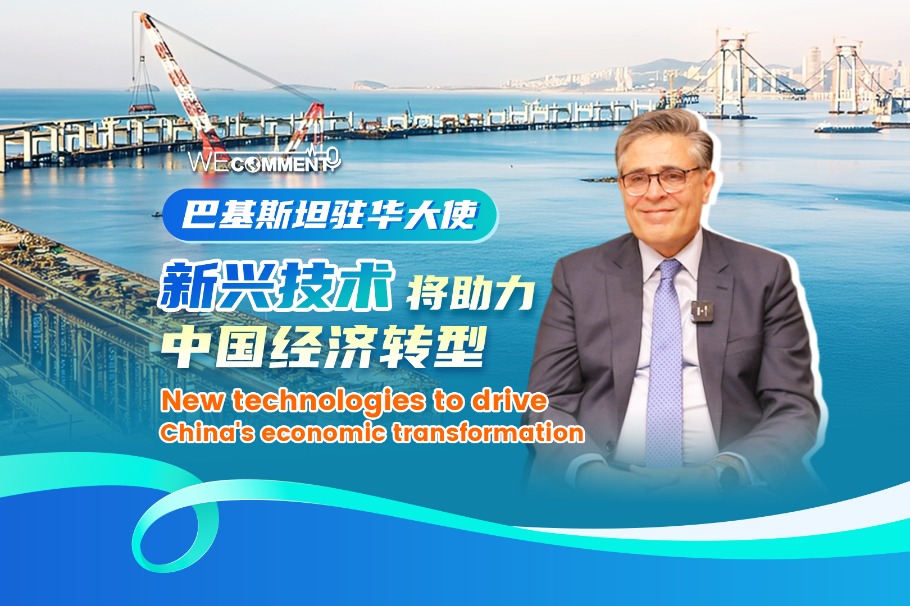Gansu: 70 years on

Editor’s Note: Starting in May, the State Council Information Office has been organizing news conferences for each province, autonomous region and municipality to give briefings about their social and economic development since the founding of New China 70 years ago.
During the Gansu session held June 5 in Beijing, Lin Duo, secretary of the CPC Gansu Provincial Committee, and Tang Renjian, deputy secretary of CPC Gansu Provincial Committee and governor of the province, talked about Gansu’s development with reporters.

Gansu is located in inland Northwest China, and is an important birthplace of the Chinese nation and its civilization. Currently it has formed distinctive and advantageous industries including petrochemicals, nonferrous metallurgy and equipment manufacturing, and become a significant industrial base in China, with its level of economic development improved and the living standards of its people enhanced significantly.
Economic strength
Last year, Gansu’s GDP exceeded 820 billion yuan ($116.44 billion), an increase of more than 600 times since the founding of the People’s Republic of China in 1949. In recent years, it has been striving to promote high-quality development, accelerating the transformation and upgrading of traditional industries with distinctive features and advantages, and maintaining high-speed growth in high-end equipment manufacturing, intelligent manufacturing, new energy, new materials, biological medicine and other strategic emerging industries. The cultural tourism industry has become a pillar industry in Gansu province, forming a stable industrial structure of “tertiary, then secondary, lastly primary”.
Poverty alleviation
Gansu has been fighting against poverty for a long time, and the practice of regional poverty alleviation in China originated in the province. Poverty alleviation in Gansu has now entered a new stage. A total of 5.81 million people have been lifted out of poverty. The incidence of poverty dropped from 33.2 percent to 5.6 percent, and 36 poverty-stricken counties were lifted out of poverty.
Opening-up
The Belt and Road Initiative (BRI) is the biggest opportunity that Gansu faces now. Relying on the Silk Road (Dunhuang) International Cultural Expo, it has built an opening pattern featuring interconnected land and sea routes as well as mutually reinforcing cultural and economic cooperation and exchanges with other countries.
Infrastructure
There were only 4,000 kilometers of highways available to automobiles in the province before 1949. Now the length of highways has exceeded 140,000 km, and the length of expressways has reached 4,242 km. All the province’s 14 cities and prefectures now have expressways. The railway and civil aviation industries have also developed rapidly. The total length of high-speed railway has reached 1,153 km, and there are now 10 navigable airports in Gansu. The province has opened more than 200 domestic and international air routes linking with more than 100 cities. Gansu has basically established a three-dimensional transport network that extends in all directions.
Ecology
Gansu province is an important ecological barrier in Northwest China. Over the past 70 years, the whole province has paid great attention to ecological construction and carried out widespread afforestation and desertification control. The forest coverage rate has increased from 2.6 percent to 11.3 percent.
Living standards
In 1949, the province’s per capita income was only about 90 yuan. In 2018, the per capita disposable income of urban and rural residents reached more than 29,000 yuan and 8,000 yuan. Meanwhile, the per capita disposable income of urban residents was 157 times that of 1957, representing an average annual growth of 8.6 percent, while the per capita disposable income of rural residents was 159 times that of 1957. With the system of public services including education, medical care, culture and social security completed, the living standards of urban and rural residents are see continued improvement.








